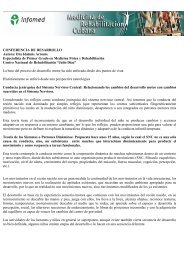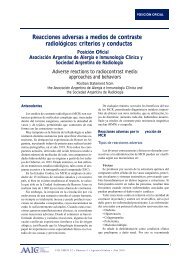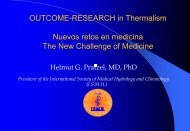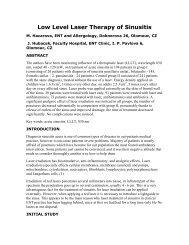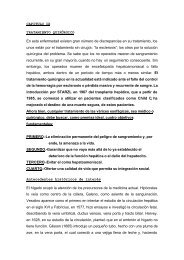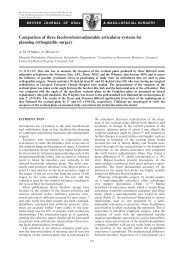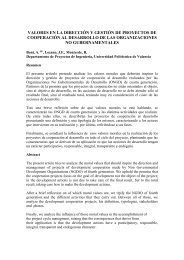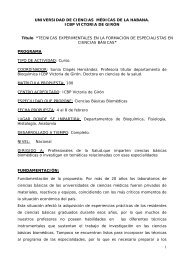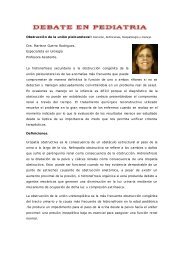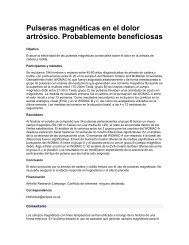Perioperative Anaphylaxis
Perioperative Anaphylaxis
Perioperative Anaphylaxis
Create successful ePaper yourself
Turn your PDF publications into a flip-book with our unique Google optimized e-Paper software.
438<br />
Mertes et al<br />
reaction restricted to a single clinical symptom (eg, bronchospasm, tachycardia with<br />
hypotension) can easily be misdiagnosed because many other pathologic conditions<br />
may have an identical clinical presentation. In mild cases restricted to a single<br />
symptom, spontaneous recovery may be observed even in the absence of any specific<br />
treatment; however, under such circumstances, the lack of a proper diagnosis and<br />
appropriate allergy assessment can lead to fatal re-exposure.<br />
In most cases, after adequate treatment, clinical signs regress within an hour without<br />
sequelae. In some cases, bronchospasm can be particularly severe and resistant to<br />
treatment, with a risk of cerebral anoxia or death. Treatment mainly depends on early<br />
adrenaline administration and volume expansion. Adrenaline administration should<br />
be tailored to the severity of symptoms (Table 4) (ie, initial dose of 10 to 20 mg intravenously<br />
in grade II reactions and 100 to 200 mg in grade III reactions, repeated every 1 to 2<br />
minutes as necessary). 2 Rapid but goal-oriented administration of adrenaline is mandatory<br />
to ensure treatment efficacy but also to minimize potential side effects of treatment.<br />
16 Prolonged inotropic support may also be required in some patients.<br />
Moreover, prior treatment with beta blockers is a potential risk factor explaining an<br />
absence of tachycardia as well as resistance of arterial hypotension to adrenaline. 64<br />
In cases resistant to adrenaline, the use of vasoactive drugs such as noradrenaline,<br />
glucagons, or even vasopressin or vasopressin analogues has been advocated.<br />
POPULATION AT RISK<br />
The potential severity of anaphylaxis during anesthesia underscores the interest of<br />
developing a rational approach to reduce its incidence by identifying potential risk<br />
factors before surgery. Although several risk factors occur more frequently in patients<br />
with anaphylaxis during anesthesia, their prevalence in the general population is such<br />
that few would benefit in terms of preoperative screening for a potential sensitization<br />
toward anesthetics. 65<br />
Recently, recommendations have been proposed concerning the identification of<br />
a population at risk for perioperative anaphylaxis who would benefit from preoperative<br />
investigation. 2 Indeed, false-negative results or false-positive results of preoperative<br />
investigation could have disastrous consequences in regard to anesthesia by leading<br />
to a change to a maladapted anesthesia technique. Patients at risk have been defined<br />
as follows:<br />
Patients who are allergic to one of the drugs or products likely to be administered or<br />
used during the anesthesia procedure and for whom the diagnosis has been<br />
established by a previous allergy investigation<br />
Table 4<br />
Grade of severity for quantification of immediate hypersensitivity reactions<br />
Grade<br />
I<br />
II<br />
III<br />
IV<br />
Symptoms<br />
Cutaneous signs: generalized erythma, urticaria, angioedema<br />
Measurable but not life-threatening symptoms<br />
Cutaneous signs, hypotension, tachycardia<br />
Respiratory disturbance: cough, difficulty to inflate<br />
Life-threatening symptoms: collapse, tachycardia or bradycardia, arrhythmias,<br />
bronchospasm<br />
Cardiac and/or respiratory arrest



